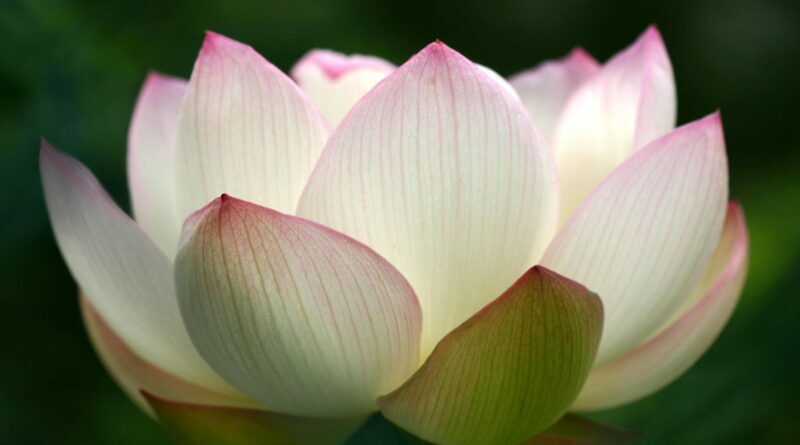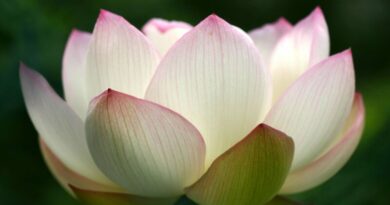UNDERSTANDING THE WORLD & THE DHAMMA
Understanding the World & the Dhamma
Now I want you to listen intently. The Dhamma I’m going to discuss today is on the topic of views and understanding. These are important things for people practicing the Dhamma to study. First you study things in general; then you come to an understanding within yourself.
Right view means seeing things correctly. For example, you see that acting in this way is good, and acting in that way is not good; acting in this way is right, acting in that way is wrong. You know what’s good and what’s evil. For example, you know that virtue is good, concentration is good, discernment is good—but you don’t know what results that goodness yields. This is called having right view, but not having understanding.
Understanding is an affair of right resolve. If you lack the important element of understanding, it’s going to be hard to practice. As a result, you get discouraged and don’t have the strength to practice those forms of goodness. But if you have right view along with understanding, then it’s going to be easy to develop goodness in yourself.
This is why people should study the Dhamma to know it clearly and to understand it as well. When you have both sides, this is called sikkhā-gāravatā, respect for study.
There are two kinds of study. The first is to study like a child in school. You have to memorize the texts and listen to the teachings from the mouths of your teachers or other monks, memorizing their words and practicing in line with them.
The other kind of study is to study like an adult. You listen and then you make yourself understand—taking what you’ve heard, contemplating on your own, and then trying it out to the point where you gain results.
In training the heart to reach the paths and their fruitions, some people can do it easily and get results quickly; others can do it only with difficulty and get results slowly. This is because people come in many varieties. That’s why the Buddha taught in three ways. On the first level, all he had to do was explain things so that his listeners agreed, and they were able to understand on their own. On the second level, he had to explain things so that they agreed, and he also had to show them how to come to an understanding. On the third level, he had to explain things so that they agreed, and then he also had to quiz them back and forth many times before they understood.
As for the fourth level—the people who couldn’t see what he was getting at and didn’t understand—no matter how much he might try to explain things, he wouldn’t get any results. These are the people he abandoned because they were padaparama—they could go no further than the words—and were a waste of time.
The issues that we have to study are these: What is the world? What is the Dhamma?
Our body—starting with the stem of the heart and going out to the bones, muscles, skin, hair, etc.—is an affair of the world. There’s no truth to it, for it does nothing but waste away. We first have to study our body so that we thoroughly know how it comes into being and goes out of being. Some parts of the world are good but not true; some are true but not good. Thoughts, words, and deeds are things that aren’t true. They’re an affair of the world. As for the Dhamma, it’s an affair of what’s true and what’s good. When you truly do it, it’s truly good and you get true results. It’s an affair of the heart, something very profound.
When we say that the world is good but not true, it can be compared to paper money. Paper money is good for buying and selling things, but it’s just paper. It doesn’t have any true value to it. As for what’s true but not good, it’s like old-fashioned silver money. In the past you could use it to buy things worth 100 cents, but now you can’t use it to buy things worth even one red cent. This is what the affairs of the world are like.
This shows that external material things, the things of the world, are things that aren’t true. They’re good but not true, or true but not good. People who latch onto the things of the world as real and true will never meet with what’s really good and really true. They’ll have to keep meeting only with things that aren’t good and aren’t true. They won’t have any way of meeting with true or genuine happiness. They’ll have to keep meeting up with things spinning around for their entire lives.
This spinning around is like the spinning around of a windmill. It just spins around and around in place, without ever going anywhere. This is the opposite of the Dhamma. When people practice the Dhamma, then even though there’s still change and spinning around, they spin like the propellers of an airplane. In other words, they spin to keep going higher and higher, in the same way that airplane propellers carry an airplane up into the air.
Or you could say that they spin like the wheels of a train that carry the train and its passengers to the station or their ultimate destination. The propellers and wheels here stand for the wheel of the Dhamma, which spins with virtue, concentration, and discernment. When virtue spins forward for the sake of purity, it cuts through sensual craving, and counts as the resolve for renunciation. When concentration spins forward for the sake of purity, it cuts through craving for becoming, and counts as the resolve for non-ill will. When discernment spins forward for the sake of purity, all craving ends. This is resolve for harmlessness. Virtue, concentration, and discernment are thus interconnected. They’re aññamañña-paccayo, anantara-paccayo, sahajāta-paccayo, and nissaya-paccayo: immediate conditions, reciprocal conditions, simultaneous conditions, and conditions that depend on one another.
We have to bury our lives into the Dhamma wheel until we reach the hub, so that we can receive the results of not having to spin around to be born again.
What’s the cause of spinning back to birth? Clinging to “us,” to “them,” and to “self.” Clinging to good and not good; to past, future, and present. These are the causes that force us to spin around in birth and death in the cycle of saṁsāra.
So when we know that the affairs of the world aren’t true in their goodness or good in their truth, we shouldn’t cling to them. We have to brush them aside. If people say we’re good or bad, there’s no truth to their words—because “good” is true only in the mouth of the person speaking, and “bad” is true only in the mouth of the person who yells it. So don’t latch onto anything they say. Focus instead on the good and bad that are actually within you.
As for the good and bad things we do, no one knows better than us. Even devatās can’t know better than we do, because these are things that are known exclusively inside. As long as we deludedly take “good” and “bad” from other people, we’ll have to keep on meeting with suffering and stress, over and over again. That’s because the affairs of the world are affairs of having “us” and “them” and “self.” “Them” [khao] is the horns [khao] of a forest animal, or of a cow or water buffalo. “Us” is like the tusks of an elephant. Even though an elephant’s tusks are high things, attached to its head, they have to come striking down on the ground. If we put horns and tusks on our heads, we turn into forest animals, too. If we’re like cows and water buffaloes, we won’t escape from being caught and slaughtered, or stabbed by the horns of other water buffaloes. If we put tusks on our heads, it’s like riding on an elephant’s neck. We might get stabbed by the elephant’s tusks.
The elephant here stands for ignorance. When there are elephants, there have to be other animals, too. If we have an elephant in us, we’re still in the dark. We can’t see any light; we can’t see the truth. There are times when we are the ones standing in the way of our seeing the truth, because we latch onto sights, sounds, smells, tastes, tactile sensations; or feelings, perceptions, thought-fabrications, and consciousness, which are all fabrications. They’re nothing true or genuine. They keep changing. They’re not for sure. If we enter into them and get stuck, clinging to them as genuine and real, that’s the cause that brings suffering on ourselves.
The same with good and bad: When people say you’re good or bad, don’t get pleased or upset. Go by the reality of what you’ve actually done. When people practice correctly, bringing their minds to a high level, developing until they reach the Dhamma in full, their goodness opens out on its own, like the petals of a lotus fully blooming in a pool. The blossom is large, the petals spread out, and they send a sweet fragrance—coolness—in all directions.
The coolness here is happiness and ease. When the eye sees good sights, it’s at ease. When it sees bad sights, it’s at ease. When the ear hears good sounds, it’s at ease. When it hears bad sounds, it’s at ease. When the tongue tastes good flavors, it’s at ease. When it tastes bad flavors, it’s at ease. Whatever sensation comes to make contact, whether good or bad, the mind has to be neutral and unfazed in chaḷaṅg’upekkhā, six-factored equanimity, which is both a factor of the path and one of the factors for awakening.
The Buddha wasn’t stuck on good or bad, wasn’t snagged by sensations or preoccupations, past, future, or present. This is why he’s termed lokavidū: an expert with regard to the world. When the mind isn’t stuck or snagged on external preoccupations—good, bad, past, future, or present—it will gain release from mental fermentations. It’s a mind that has reached the stream of the Dhamma. It has a cool sense of ease as it’s mental home. It’s gained the skill of release. Whenever you can practice in this way, you’re sure to get results then and there, without any limitations of time or season, so it’s akāliko: timeless.
For this reason, I ask that we all study to clearly know the affairs of the world and of the Dhamma until we understand them. Whichever aspect is an affair of the world, let it go. Whichever is an affair of the Dhamma, bring it into your hearts and practice it. That’s when you’re sure to get the results: peace, a cool sense of happiness and ease. Wherever you stay, you’ll be at your ease. Wherever you go, you’ll be at your ease, free from anything that would trouble you.



